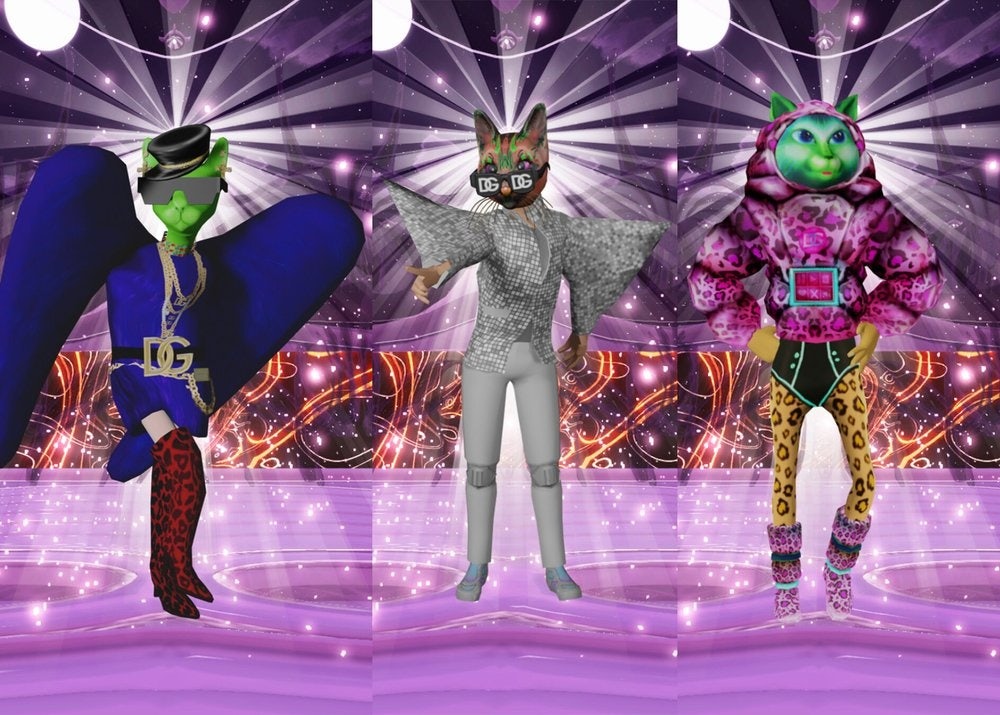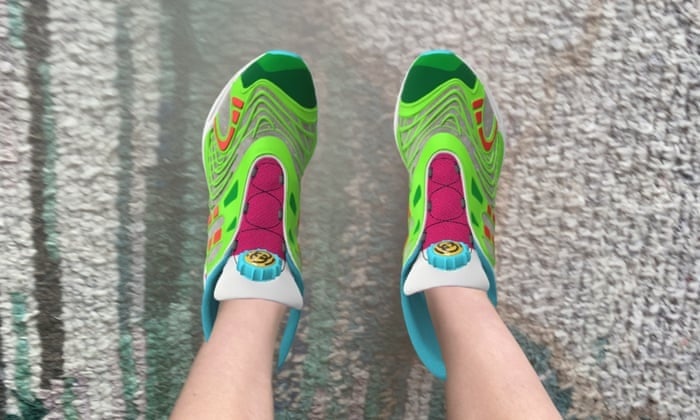Luxury is well and truly embracing the metaverse. From Burberry dabbling with virtual avatars and Prada’s Chinaverse runways, to Gucci’s star studded Roblox residency, the top fashion titans from around the world aren’t holding back when it comes to building their Web3 empires. But there’s one contender that the industry just can’t seem to compete with: streetwear.
Known for its defining signatures — artistic collaborations, capsule collections, timely drops and limited runs — streetwear is proving to be as proficient at dominating the metaverse as it is at upending the luxury fashion sector.
In fact, its reign looks unshakeable, one OpenSea crash and sold out collection at a time. With Web3 inching ever more mainstream, has the offline luxury sector found an Achilles heel in its attempts at cracking the virtual space? Jing Daily explores what’s putting streetwear ahead in the digital fashion game, and what traditional luxury can learn from the former’s approach to the metaverse.
Traditional marketing methods won’t perform well in Web3#
Luxury cannot simply translate its traditional marketing strategies into digital ones. Take physical fashion shows as an example. Decentraland’s recent Metaverse Fashion Week concept struggled to resonate with audiences due to its lack of quality graphics and consistent glitching; Jason Wu and Dress X’s 8.5 ETH (approx £13,600 USD) Michelle Obama dress — which came with two tickets to Wu’s show — received a stark lack of bids, demonstrating people’s reluctance to pay extortionate prices for solo events.

To create cultural relevance in today’s Web3 market, it’s about keeping customers engaged through alternative avenues. Streetwear doesn’t rely on runways to sell its products; instead, it’s about creating hunger through other unique, forward-thinking strategies.
“I think the main thing is appetite for risk,” says Anthony Stead, co-founder of digital sneaker company Blanksoles. “Streetwear is about taking risks and being brave, and if we look at Web3 as this new and innovative space, streetwear brands are wanting to jump in, whereas luxury is much slower and less willing to take the leap.”
These pioneering examples include next-generation streetwear NFT collective Hape’s visions of a "digital playground" where users are provided with the assets and toolkits needed in the metaverse; Cult & Rain’s ambition to bring a luxury-standard experience to its loyal, streetwear-centric community; Nike’s acquisition of virtual leader RTFKT back in 2021; and KITH’s collaboration with Invisible Friends (one of the first phygital projects to garner mainstream attention). Put simply, it's about staying ahead of the curve.

The importance of building communities#
Whereas luxury uses its own scarcity model to maintain surplus demand over supply, it derives its exclusivity through enhanced offline shopping experiences and largely unachievable high-price points. Streetwear’s exclusivity, however, is contingent on being part of a know-how community in order to cop the latest drop. Unsurprisingly, the latter is favored in Web3.
The streetwear and NFT sectors share a notable amount of similarities. They are both self-made worlds that thrive off their ability to turn assets such as sneakers and handbags (think Mason Rothschild’s Metabirkins) into collectibles. Hype and scarcity connect the two also. Both represent cultural movements revolutionizing the fashion industry, achieved through celebrating creativity, community, and storytelling in their campaigns.
Vitally, they both advocate for up-and-coming creatives to give them a voice in their community. Earlier this year, the Hape NFT collective lit up Times Square with a series of animations designed by different artists. "What does Hape mean to you?" the creatives were asked, who then bought their own words to life on one of four panels located in one of the most lucrative advertising spaces of the world.
This savvy marketing move also spotlighted the community at the beating heart of the brand. Hape’s steadfast coterie is a result of the label’s dedication to giving its followers a space to connect, share ideas, and feel part of something bigger than the average consumer. With over 163,000 followers on Instagram, 314,700 followers on Twitter, and a hub of 470,000 users on Discord, they’ve cultivated an unwavering foundation which aims to make its fanbase feel as though they are an active community rather than passive fans. The brand hands over much of its creative inspiration to its followers to acknowledge and deliver on what the community wants, and how exactly they want it.
New possibilities for direct consumer interaction#
With so much importance placed on customer’s preferences, feedback, and insights, followers take to social platforms to share, like, and promote the brand’s projects, both amplifying visibility and its relationship between it and the consumer. Matt Sypien, founder of Hape explains: “We have a powerful, invested community that is integral to the spirit of the brand, so we constantly chat to them in Discord and take note of their responses. In a way, they’re creators of the brand themselves.”
Developing strong and diverse ecosystems is a foremost priority for both streetwear and NFT cultures, to make consumers feel a part of the brand. Luxury brands have achieved this in the traditional sense but not in Web3, where communities are more interactive.
“I think it's about what a luxury brand is willing to give up to its followers. Web3 community is largely about empowering the community rather than the corporation, and so as an old luxury fashion house, it is scary to give that power over to the people,” Stead says. The metaverse aims to give users a democratized space to socialize and join forces — something luxury has seemed less enthused about.
Long-term strategy over dipping in#
At the start of 2022, investment bank Jefferies reported that the NFT market would reach over 80 billion by 2025, projecting a highly-rewarding opportunity for luxury brands. But many are too quick to jump in without doing their research or finding the right partner, which can be a mistake.

“The problem with luxury brands is that their experiments in the metaverse are always incomplete. They try to sell NFTs at a lower price compared to the physical market, like Gucci NFT shoes for 12, but with no after sale experience,” says Marco Stagliano, CEO of phygital Web3 fashion platform Another-1, which works on intersecting the luxury and streetwear markets with hype Web3 culture. This brings us onto the matter of utility with a token or NFT: what collectors are increasingly looking for is value in unlocking future benefits and VIP access.
For Maren Coleman, Hape’s Head of Strategy and Marketing, many brands are still treating tokens as just a digital image file that’s being traded around. “Which is why they get it so wrong,” she explains. “This token is just the starting point, and it's actually something that can expand how you can engage with your community, like through fashion and cultural events.”
If a token unlocks further long-term benefits and utility, holders are more likely to be brand loyal. This is something Blanksoles’s Stead reiterates. “When it comes to roadmaps, it’s committing to the long term. A lot of luxury brand NFTs drop utilities that say something along the lines of 'more cool digital experiences coming soon.' This is because they're cautious to allocate internal budget to a fleshed out roadmap before they've seen ROI.” But a strong, long-term presence leads to stronger social capital, something that’s being brought to light through the latest phygital movement and the online-offline approach to flexing products.
The metaverse is providing a clean slate for the fashion industry, which can terrify some traditionalists. While some luxury names are beginning to recognize the impact of Web3 — such as those joining forces through the Aura Blockchain Consortium to harness the blockchain technology — others need to be open to adopting fresher strategies, prioritizing community over profit, and be ready to leave their egos at the virtual door.


